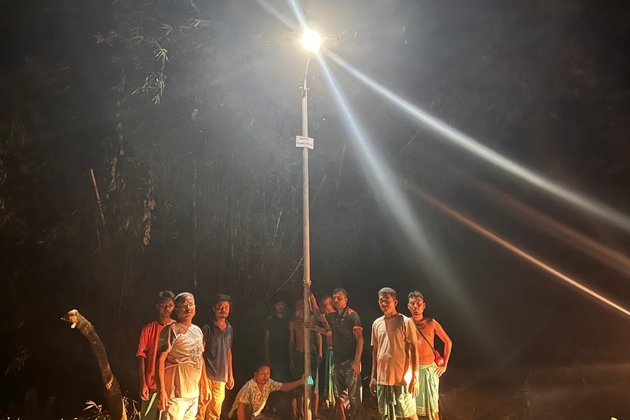In a major move towards ensuring the safety of both local communities and wildlife, Aaranyak, a prominent environmental organization based in Assam, has installed 30 solar streetlights in vulnerable areas prone to human-elephant conflict. This innovative initiative aims to enhance visibility during nighttime, thereby reducing the likelihood of human-elephant encounters and promoting a harmonious coexistence between humans and elephants.
Understanding Human-Elephant Conflict
Human-elephant conflict (HEC) is a pressing issue in Assam, a state known for its rich biodiversity and significant elephant population. The encroachment of human settlements into elephant habitats has resulted in frequent encounters, often leading to destructive incidents for both parties. Elephants may raid crops, causing economic losses to farmers, while humans can face dangerous situations when they unexpectedly come into contact with these majestic animals.
The conflict not only threatens the safety of local communities but also endangers elephants, leading to injuries and fatalities. As a result, effective measures to mitigate this conflict have become crucial to ensure the survival of both the species and the livelihoods of the people living in proximity to elephant habitats.
The Role of Aaranyak
Aaranyak, an organization committed to biodiversity conservation, has been at the forefront of initiatives aimed at addressing environmental challenges in Assam. By installing solar streetlights, Aaranyak aims to create a safer environment for local communities and elephants alike.
Key Objectives of the Solar Streetlight Initiative:
- Enhancing Visibility: The primary goal of the solar streetlights is to improve visibility in areas frequently traversed by elephants during nighttime. Enhanced lighting will help alert residents to the presence of elephants, allowing them to take necessary precautions and avoid potential encounters.
- Reducing Crop Damage: With better visibility, farmers will be able to monitor their fields more effectively during nighttime hours, thus reducing the chances of elephants raiding crops. This proactive measure aims to minimize economic losses for local farmers.
- Promoting Community Safety: The solar streetlights will also contribute to the overall safety of communities. Well-lit areas can deter not only elephants but also potential criminal activities, fostering a sense of security among residents.
- Encouraging Sustainable Practices: By opting for solar energy, the initiative aligns with environmentally sustainable practices. Solar streetlights reduce reliance on conventional energy sources, contributing to lower carbon emissions and promoting renewable energy solutions.
Implementation and Impact
The installation of the 30 solar streetlights has been strategically planned in regions identified as high-risk areas for human-elephant conflict. Aaranyak collaborated with local communities to pinpoint the most affected locations, ensuring that the initiative effectively addresses the needs of those directly impacted by the conflict.
The solar streetlights are designed to be energy-efficient and require minimal maintenance, making them a sustainable long-term solution. By utilizing solar power, the initiative not only promotes clean energy but also reduces operational costs associated with electricity consumption.
Expected Benefits:
- Improved Community Relations: By taking proactive steps to mitigate human-elephant conflict, Aaranyak fosters goodwill among local communities, showing that conservation efforts can go hand-in-hand with protecting livelihoods.
- Enhanced Awareness: The initiative serves as a platform to raise awareness about the importance of elephant conservation and the challenges posed by human-elephant conflict. Educational campaigns can be integrated into the project to inform communities about coexisting with wildlife.
- Potential for Expansion: If successful, the project can be expanded to include more solar streetlights in other vulnerable areas across Assam, creating a network of safe zones for both humans and elephants.
Collaboration for Conservation
The success of the solar streetlight initiative highlights the importance of collaboration between conservation organizations, local communities, and governmental bodies. Effective communication and cooperation are essential in creating sustainable solutions that benefit both wildlife and people.
Local farmers, residents, and conservationists can work together to develop further strategies to coexist with elephants, such as creating wildlife corridors, establishing buffer zones, and implementing community-based conservation programs. These collective efforts can lead to innovative solutions that address the underlying causes of human-elephant conflict.
The installation of 30 solar streetlights by Aaranyak in Assam marks a major step towards mitigating human-elephant conflict in the region. By improving visibility and enhancing safety for both communities and elephants, this initiative sets a precedent for innovative conservation efforts.
As Assam continues to navigate the challenges of balancing human development with wildlife conservation, initiatives like these demonstrate the potential for positive change through collaboration and sustainable practices. With continued commitment and support, Assam can pave the way for a future where humans and elephants coexist peacefully, ensuring the preservation of both livelihoods and biodiversity.




